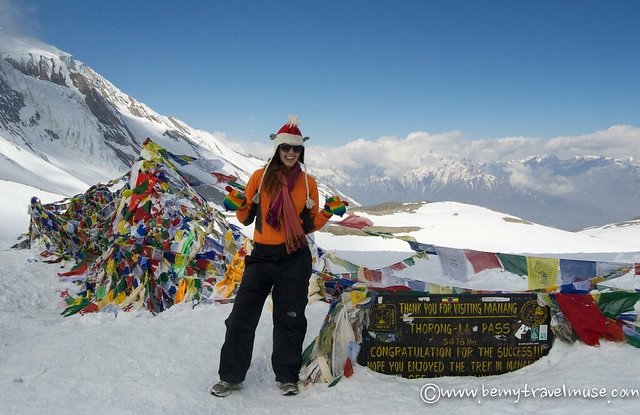The Annapurna Circuit Trek is more than a walk: it’s a deep cultural and life-changing journey from the subtropical forests of banana plants, rhododendron trees, and colourful grapevines to dry, nearly lunar deserts on top of Thorong La Pass (almost 5500m high above sea level). Booking a ticket is just the beginning if you are to survive what will feel like a 150-200km odyssey – much like the Apollo moon mission, detailed and focused training in all of the key areas that make up for mud run success needs to be looked at. To make your adventure safe, comfortable, and truly successful, you need to go through a thorough process of preparing physically, managing acclimatization, choosing or buying gear, and some other nitty-gritty details. This must-read field guide is your ticket to the best trip ever in the breathtaking Annapurna Circuit.
Physical Conditioning: Building Himalayan Stamina
The Annapurna Circuit Trek isn’t a technical climb; it’s an endurance battle. You don’t need to “train” for a walking tour in the way you would, say, train to run marathon :-); it’s mostly about vo2max/relative cardiovascular power and endurance — ie: doing what amounts to average 5-7 hrs/day of relaxed hiking/sauntering day after day after day for weeks on end through a lot of up-down. Cardiovascular endurance is paramount. You’ll also want ideally at least three to six months before the trip in order to get on a good, structured regimen, which could involve things like running, cycling, or swimming (45-60 minutes of moderate intensity cardio four to five times a week. Simply as critical is to feature a few energy schooling, focusing on the lower body and core. aAdds squats, lunges, step-ups, and planks to bolster the muscle mass to help with the heavy lifting going up and down hill. What’s the finest way to educate for this? Backpacking with a daypack filled for weight support. “Hike up and down different types of terrain, also uphill,” Johnson says, “and incorporate a stair climber or flights of long stairs to simulate the thousands of continuous stone steps.”
Necessary Trekking Gears and Techniques
Your clothing system needs to be structured around your 3 layers. That first layer should be in the form of moisture-wicking synthetic or merino wool tops and bottoms; its job is to wick sweat away from your body and also help maintain a comfortable temperature. The middle of the sandwich is insulation; that’s a fleece or light down jacket (or anything that traps heat). The outer can be a jacket and over trousers, made waterproof and windproof by virtue of mountain weather, making quick change, leaving no room for preparedness. Essential gear A comfortable pair of well worn-in trekking boots with good ankle support (to reduce the risk of sprains and/or blisters), a 4 season sleeping bag rated to at least −10∘C as teahouse blankets may not be enough hint of cold weather on high altitude treks, and walking poles which will take pressure off your knee, especially on steep decents.
Required Permits and Documentation
There are two mandatory permits for the Annapurna Circuit Trek; you must have these before ASCENDING THE HIKE. One is the Annapurna Conservation Area Permit (ACAP), which, in reality, is an entrance fee to the enclosed conservation area and money that goes into conservation and community support. The second is the Trekkers’ Information Management System (TIMS) Card, which verifies your trek in a central database, ensuring that you are safe and aid can be provided if something should happen on your hike. Applicants need to carry their original passports, visa, and 2-4 passport-sized photos for the application.
Itinerary Planning and Logistics
The quickest someone has made this trek is 10 days (but it’s not really a great experience to do it that fast). More often than not, people finish the trail in about 14-21 days because they need time to properly acclimatize. The days walking between Manang and the Thorong La – Manang, Base Camp (Yak Kharka) to Thorong Phedi or High camp – are crucially important and you MUST build in extra time! Decide whether you want to hike solo, with a local guide and/or a porter, or to be part of an organized group. Involving members of the community helps us, yes, but also puts money where it’s needed locally.
Health, Insurance, and First Aid
Don’t scrimp on travel insurance.ce There are so many reasons not to: cancellations, medical coverage should the worst happen. It ought to cover high-altitude trekking up to 5,500 meters and — crucially — emergency helicopter evacuation when users have severe altitude sickness or incur an injury en route. Try not to overlook the fine print — most insurance policies do not cover high-altitude activities as standard. Pack a primary resource kit with blister care (Moleskin or Compeed), ache medication, anti-diarrhea medication, water purification capsules or drops, and any non-prescription prescription meds. Seek advice from your physician about the required or really useful immunisations you will want to have for Tetanus, Typhoid, and Hepatitis A. Desirable hand hygiene, especially before eating, is our best defense against most gastrointestinal diseases.
Nutrition and Purification of Water
Stay away from untreated tap or stream water. Bottled water is available at teahouses, but those thousands of plastic bottles that are left behind aren’t good for the environment. The best bet is to bring your reusable water bottles or hydration bladder and treat the water yourself. You have the following choices: water purification tablets (Iodine, Chlorine Dioxide), a Steripen (UV light purifier), or whatever is in your water filter/microfilter, like the Sawyer Squeeze. You can also purchase safe, boiled water in teahouses.
Preparation for the Trek
The Annapurna Circuit is as much about mind over matter, a test of your mental strength more than physical. You will suffer from very long, dull days and difficult weather, even a bit of physical discomfort. Be prepared for basic and crude teahouse accommodation and weather delays, as well as limited food options in the remote villages. Don’t overdo this; the word is not fast but steady. Keep positive despite hard times and focus on the stunning nature and beautiful culture. What sets anyone apart from having a terrible trek to the most amazing trek is open-mindedness and a sense of humor.
Final Conclusion: Essence of Annapurna
Getting ready for the Annapurna Circuit Trekking is a fun undertaking in its very own right, as well as a prelude to an incredible Himalayan journey. But you limit hazard, and that is how you get to do what the climbers right here are doing: You position out for top bodily situation; percent sensibly for all styles of climate; stick with an exacting time table of acclimatization, and maintain plugging away at bureaucratic hurdles. However, the actual magic of the Annapurna Circuit is not just massive mountains but also smiling local Gurung and Manangi humans, flapping prayer flags atop passes, that completely satisfying feeling of feat as you end one of the international’s excellent walks. It allows you to be “there, really there,” and experience the culture, the raw, jaw-dropping power of the Annapurna massif. Make the effort, respect the mountain – and voilà!


